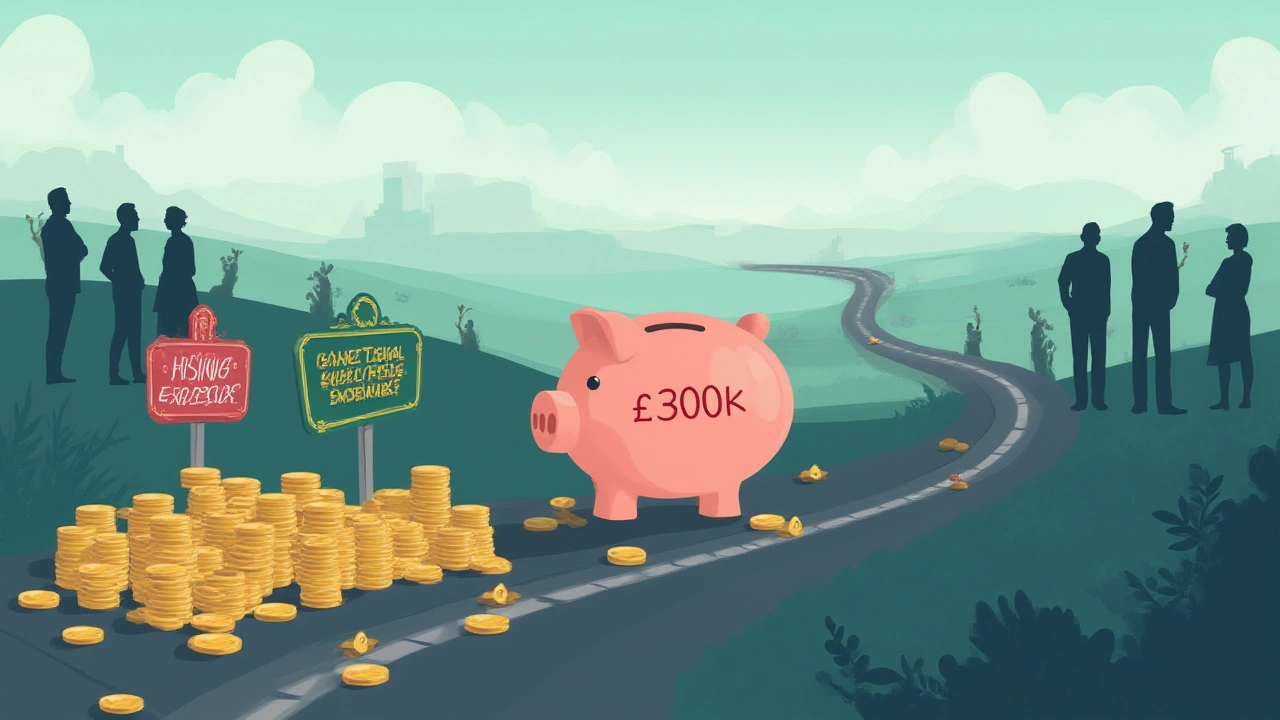Suddenly imagining waking up at 55 and never heading back to work? It’s a dream so many of us have while stuck in morning traffic, sipping coffee from a stained mug, or just dodging another stressful meeting. But is it actually possible to retire at 55 with $300,000? Or is that magic number just a dangerous myth? Spoiler: The answer isn’t “yes” or “no.” It all hinges on how you live, what you spend, and how you plan for the curveballs life loves to throw.
What Does $300,000 Really Mean in Retirement?
$300,000 sounds like a big pile of money – until you do the math. The hard truth is that the average American now lives until nearly 80. If you retire at 55, you could be looking at 25 or maybe even 35 years of living off that nest egg. That’s a long time for one lump sum to last, especially when you consider inflation, surprises like health expenses, and even good news like living longer than you planned.
To put things in perspective, let’s look at this simple table comparing years of retirement, annual spending, and what $300k would give you:
| Years Retired | Annual Withdrawal | Total Needed (Not Counting Investment Growth) |
|---|---|---|
| 20 years | $15,000 | $300,000 |
| 25 years | $12,000 | $300,000 |
| 30 years | $10,000 | $300,000 |
See what happens? If you withdraw more than $15k a year, the money could vanish in about 20 years. Add inflation, rising healthcare costs, and unexpected bills, and suddenly it looks tight—unless you plan to live like a frugal monk. According to Bureau of Labor Statistics data from 2024, the average American household of folks 65+ spends about $52,000 a year. Most people would need to dramatically cut expenses, house size, entertainment, or even skip owning a car just to make $300k last two decades.
It’s also worth mentioning the infamous “4% rule.” Financial advisors still toss this around, meaning you pull out 4% of your nest egg per year and hope you don’t run dry. With $300k, that’s $12,000 a year. Not much wiggle room.
So, does 300k equal retire-anywhere? Not unless you plan with creative strategies—and are willing to make life changes.
Key Factors That Shape Your Retirement Reality
There’s a reason every “Can I retire?” calculator asks so many nosy questions. Your location, lifestyle, and personal health impact how far that $300k can take you. Let’s break it down.
Retire at 55 in Manhattan, and you’ll run out of money fast. Move to a rural Southern town, or even overseas to somewhere like Portugal or Mexico, and watch your monthly bills shrink.
Healthcare? If your employer insurance vanishes and you’re not old enough for Medicare (which doesn’t kick in until 65), plan for sky-high premiums. According to Fidelity’s 2024 estimate, the average retired couple now needs $315,000 just to cover medical costs in retirement—not counting assisted living or long-term care. At 55, you’ll need to build in a 10-year health insurance budget before you can even touch Medicare.
And let’s not forget inflation. Even with a modest 2% inflation rate, $15,000 today is the equivalent of about $11,200 in 15 years. Your spending power shrinks if your savings don’t keep pace.
Here are a few big questions to ask yourself:
- Are you carrying debt? Mortgage? Credit cards? Medical bills? Debt will eat your savings alive.
- What do you want from retirement? A little house and a garden, or world travel and fancy gadgets?
- Are you supporting anyone else (kids, grandkids, parents)?
- Do you have hobbies that cost little—or a taste for golf and restaurants?
- How is your health right now, and could that change soon?

Creative Ways to Stretch 0k in Early Retirement
There’s good news: people retire with less than $300k all the time, but the ones who pull it off do things differently. Here are some strategies that have helped others—but be honest with yourself about whether any would work for your goals and personality.
- Part-time work: Not glamorous, but picking up seasonal or freelance work to cover fun money can help your investments last longer. Even bringing in $500 a month goes a long way.
- Geoarbitrage: This is just a fancy word for living somewhere cheaper. Some Americans move rural or even move abroad to places with lower costs of living and decent healthcare options. Thailand, Mexico's Lake Chapala, or even parts of the U.S. South can help your money last three times longer than in a big city.
- Tight budgeting: Many early retirees obsess over tracking every penny. Use apps to keep tabs on spending and avoid lifestyle creep. Stick to necessities, enjoy simple pleasures, and always have a buffer. The happiest retirees love their routines and hobbies—many costing little or nothing (think hiking, reading, gardening).
- Social Security timing: The earliest you can collect Social Security is 62, but your check almost doubles if you hold off until 70. If you retire at 55, you have a gap to fill. Some early retirees spend down savings in their 50s and early 60s, then switch to Social Security later.
- Draw down smarter: Not all your money grows the same way. Some early retirees live off taxable or low-penalty accounts first, letting retirement accounts like IRAs grow until they hit age 59½ or 70.
- Downsizing: Selling a big house and moving to a smaller one—or even renting—can free up more cash. Maintenance, taxes, and utilities all shrink with your home.
Get creative with side hustles, pick up new skills, or even house-sit across the world for free rent. Services like TrustedHousesitters and Workaway exist for a reason: adventure, plus cost savings.
Building a Personal Action Plan: Is $300k Enough for You?
If you’re still determined to retire at 55 with $300k, build your plan like an engineer—double-check every assumption and run the numbers backward and forward. Here’s a step-by-step action guide that can help bring a far-fetched dream a bit closer:
- Write down every single monthly expense you’ll face: housing, food, transportation, insurance, travel, gifts. Don’t guess; dig out actual bills and receipts.
- Estimate annual expenses, not just monthly. Plan for car repairs, health premiums, travel to visit family, and inflation increases every year.
- Add in big one-off costs: Think dental work, home emergencies, or family events like weddings.
- Map out your sources of income: planned Social Security (use SSA.gov calculators), rental income, side gigs, or pensions. If you have none of these, be doubly careful.
- Consider an emergency fund. One big unplanned expense in your early 60s can ruin decades of smart planning.
- Revisit your investments. Review risk and allocation. At 55, you can’t afford a big portfolio wipeout.
- Do a test run—try living for a year on the income you expect in retirement. If you feel deprived or constantly stressed, it’s not enough.
- Talk to a fee-only financial planner. It might cost a bit, but unbiased advice can help you avoid mistakes that cost way more over time.
- Consider all your insurance options: health, long-term care, and home coverage. Cutting corners here can be disastrous.
- Stay flexible. Goals change, opportunities arrive, costs run wild. Early retirees do best when they’re open to part-time work or relocating for a better deal.
